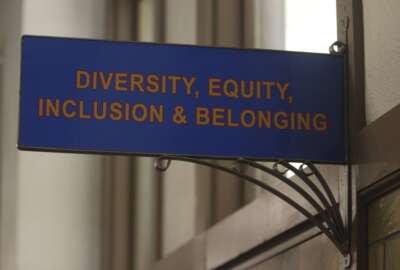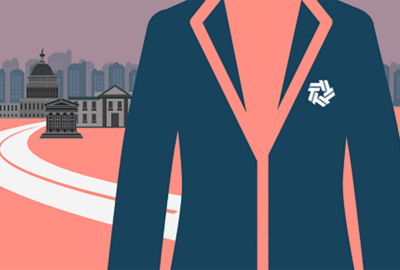VA’s Blue Button now being adopted by private sector
The Veterans Affairs Department is trying to get the wider public to adopt the \"Blue Button\" technology it developed to give its patients direct access to their...
wfedstaff | June 4, 2015 1:18 pm
The Veterans Affairs Department has awarded a $50,000 prize to health IT company RelayHealth for applying the agency’s online health-record technology to the medical records of patients of 25,000 private physicians.
The VA has been trying to get the wider public to adopt the “Blue Button” feature it created to give its patients direct access to their medical information.
Atlanta-based RelayHealth, a division of McKesson Corporation, took about three weeks to make the Blue Button feature available. President Jim Bodenbender said the company already had a network of physicians using its one-click download service to access patients’ medical files online. 
The Blue Button lets veterans read and download their medical data on a secure website.
The VA developed it more than a year ago to give veterans direct access to their health records. Since then, about 300,000 of VA patients have registered to use it
Defense Department employees and the citizens enrolled in Medicare and Medicaid can also use the Blue Button feature to get their medical records.
At a recent Health IT summit, CMS administrator Don Berwick called the blue button “the ‘open sesame’ button to a new system of care. It marks and accelerates a needed change in culture that will bring us to a whole new level of performance in a healthcare system we deeply care about.” 
Several health insurers, including Aetna, Kaiser Permanente and United Health Group, recently pledged to implement the Blue Button.
In announcing its contest winner, VA Chief Technology Officer Peter Levin said he’d like to see the new adapters expand the technology’s capabilities.
“We’re cheering from the sidelines when folks like RelayHealth adopt it and even change it to make it more useful to customers,” he said. “We think that’s a great thing, including if they do more with it than we do ourselves. That’s the whole idea behind the concept.”
He said most of the medical data accessible via the Blue Button is information that patients have had to enter. But Levin said the agency is leveraging the abilities of its health IT system, known as VistA, to make more health care records available online. 
The private sector hasn’t kept pace because healthcare providers still rely on paper, rather than electronic records, said Bodenbender, adding that the Blue Button’s spread could push them to digitize records.
“As awareness of Blue Button becomes more pervasive, I think the people will have more of an expectation that their care givers are providing them access. What we’re trying to do is make that access easy,” he said.
RelayHealth is donating its prize money to the nonprofit Wounded Warrior Project and said it would not charge patients to download their records.
RELATED STORIES:
Agencies’ health IT success becomes model for nation
VA opening up its e-health record
Health research initiative awarded, encourages innovation
Copyright © 2025 Federal News Network. All rights reserved. This website is not intended for users located within the European Economic Area.





